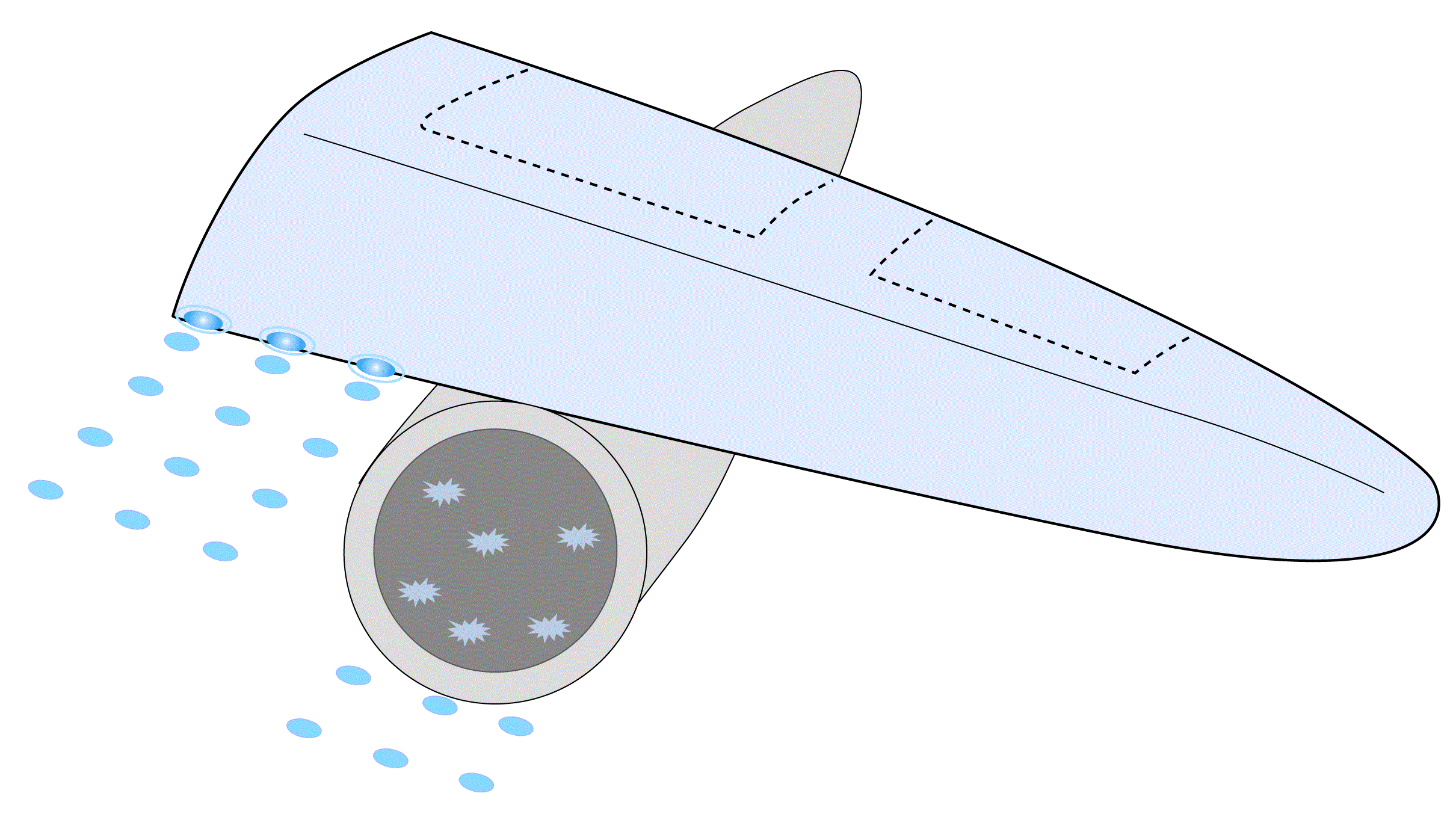Icing as aviation hazard
Over 15 % of weather-related aircraft accidents can be attributed to different kinds of icing:
- Frost formation on wings can be a ground flight operations hazard that requires deicing procedures prior to take-off.
- Adiabatic cooling of air and fuel vaporization can induce freezing and ice accumulation within the carburetor intake tube. This can greatly reduce engine performance and, in severe cases, reduce intake flow enough to cause the engine to stall.
Fig.1.1.a. Icing on airplane wing
Fig. 1.1.b. Icing inside jet engine
The severity of icing that an air pilot observes depends rather heavily on the aircraft type. Small aircrafts, such as helicopters, aircrafts with air screw and fighter planes suffer of icing more than big jet aircrafts. Consequently, aviation forecasters concentrate on environments with potential icing conditions, giving the pilots guidelines as to where, when and with what probability and severity icing occurs.
This “icing environment” refers to the synoptic situation (for example fronts) and local conditions, such as inversions and humidity. This module approaches the problem of nowcasting and short range forecasting of icing conditions from the forecaster's point of view.
Pilots can report their observations of icing and turbulence in messages called WXREP or AIREP. WXREPS are available from Sweden, Norway, Finland and Estonia, AIREPS from UK, Iceland, USA and Canada. Icing can also be reported by pilots via SIGMETS (SIGnificant METeorological information).
